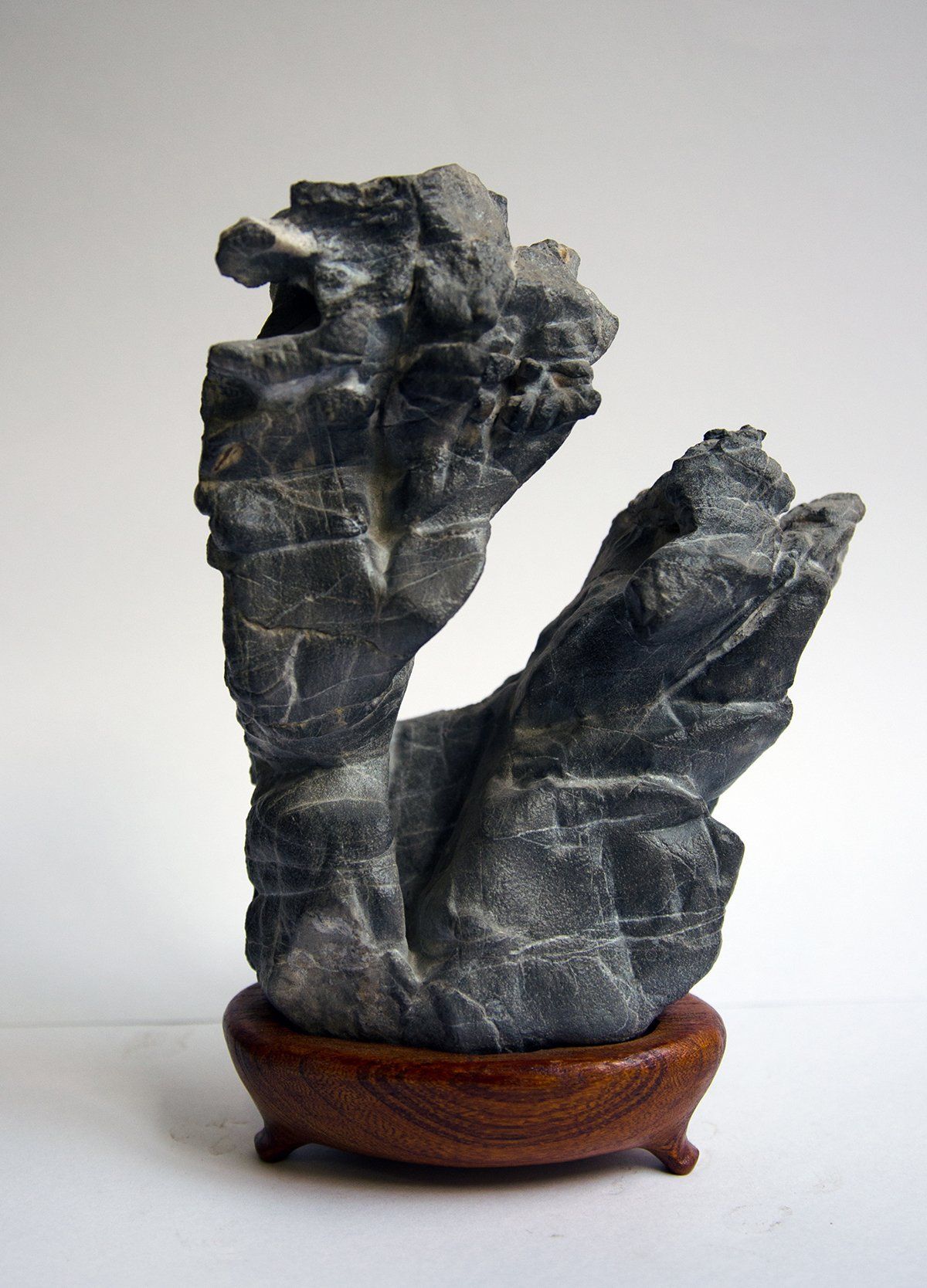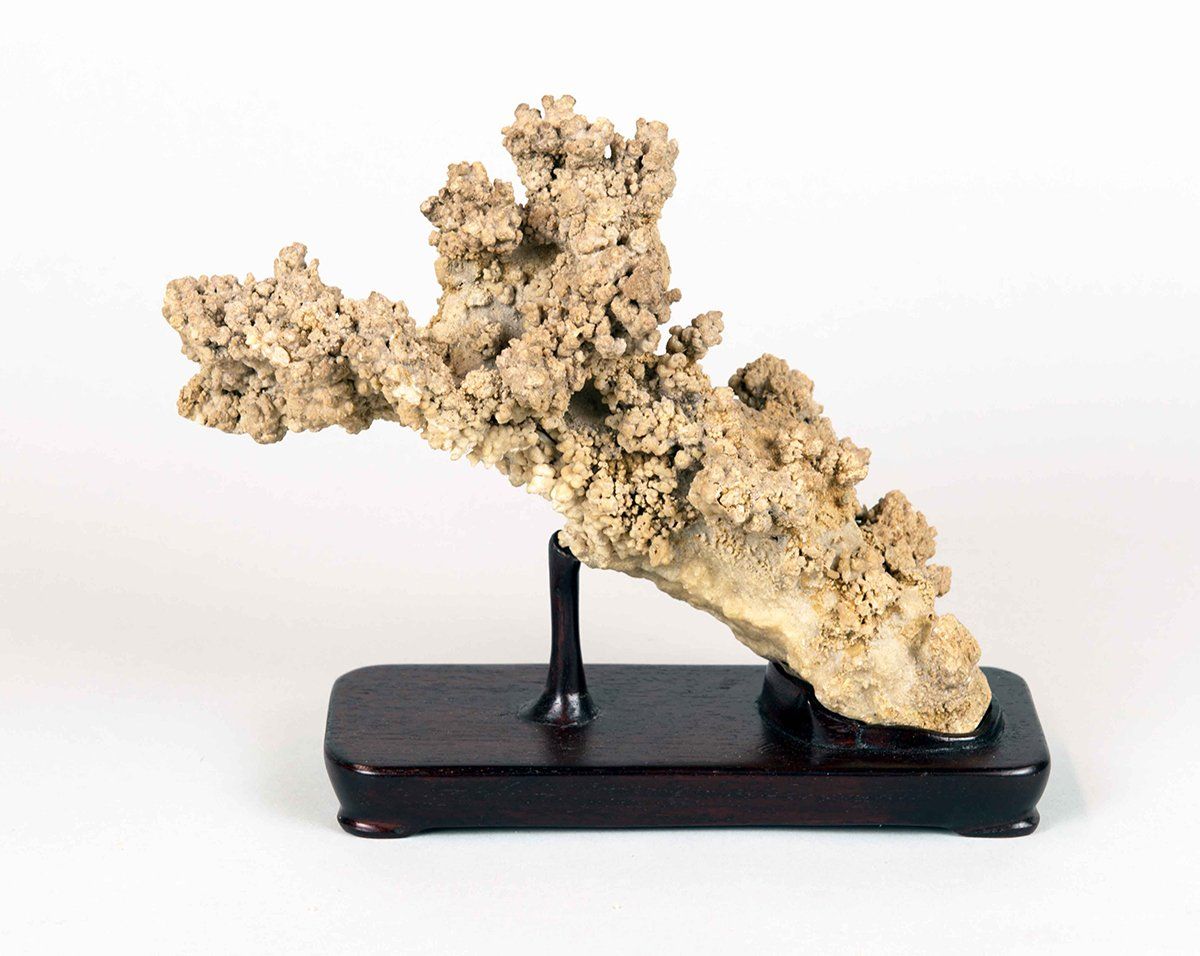Abstract Stones, Understanding and Appreciating, Part II
Understanding abstract-shaped viewing stones
By Richard Turner December, 2022
When we think of abstract stones, as compared to landscape or figurative stones, many of us may be intimidated. “What does the term ‘abstract’ mean?” “I can recognize a stone that looks like a distant mountain range or a mother holding a child because I have seen mountains and mothers before, but I haven’t experienced abstraction in my life.” To that I would answer, “Yes you have. Let me give you a few examples.”

Perhaps the most easily understood example of abstraction in our daily lives is music. Listening to instrumental music, whether it is classical, pop, or jazz, is essentially an abstract experience. We respond without thinking to the complex instrumentations of an orchestra and the improvisations of a jazz quartet. The sound of Miles Davis’ muted trumpet evokes an entirely different feeling than Wagner’s Ride of the Valkyries. We understand music intuitively even if we can’t explain our response to ourselves.
Movement is another abstraction that we experience in our daily lives. From the leap of a ballerina across a proscenium stage to an instant replay of a tight end dodging and weaving through the line of scrimmage we instinctively appreciate the discipline and skill involved even if we would be hard put to describe them in any detail. We respond, as well, to the ripples in a stream and the wind through the pines. They are forces of nature, without meaning or intent. It is thus helpful to think about abstract stones as moments in a piece of music or as still images from a video or a ballet or a football game. Ask yourself the question “What kind of movement does this stone embody —is it rising, falling, solidly seated, off-balance, taking off, settling in?” Does it make you feel calm or agitated, is it resolved or open-ended? Does it build to a climax and then fall away? Do its peaks suggest a rhythm, is its texture complex or simple? An abstract stone is an invitation to examine the stone on its own terms, not as it relates to other recognizable objects in the world but as it embodies the movement and music of the world.


What do we see here in these two stones? In the Japanese Segigaku suiseki there’s a sense of hesitant movement, one part holds back the other but also goes along. It has a bit of the reserved quality of a highly trained ballet dancer whose movement is both expressive and disciplined. The horizontal layering gives it a sense of solidity, the emptiness between the two parts is formed by two edges that are roughly parallel so there’s a sense of the stone being pulled apart. The smoothness of the material makes it seem that this hesitant movement has been going on for a long time and will continue to.
The Japanese Fugo-oroshi ishi stone on the left takes off with no thought of restraint like the football player going for the maximum yardage. There is no restraint or caution as this odd stone rises off its base and into the surrounding space. It is unfinished, open-ended. Imagine the complex clumps of texture as notes in improvised solos on saxophone or piano. They build and dissipate, climaxing and continuing on, directionless as far as we can tell. The stone itself is not a traditional example of suiseki and the “music” it suggests is certainly not classical. Unlike the other stone, which is self-contained, it is unresolved.
In Part 1 of this article Mi Fu’s criteria for evaluating stones, shou (thinness), lou (channels), tou (holes) and zhou (wrinkles) are mentioned. These terms are categories of texture. They are abstract concepts inasmuch as they do not depend on our familiarity with a known phenomenon. The wrinkles, for example, are not “wrinkles like those on the brow of an elderly man,” the concept is an idealized, not specific. Furthermore, when you see a term like shou (thinness) used to describe a variety of stones, you begin to understand how subjective and abstract the concept is in actual practice.
Additionally, there are Chinese terms that translate as graceful, clumsy, elegant, and grotesque that are applied to highly valued iconic stones. Again, these qualities are abstract ideals of beauty, which is itself an abstraction. A grotesque stone is not described as “grotesque like the Hunchback of Notre Dame or the Phantom of the Opera” it is beautifully grotesque in and of itself.
Even if you choose not to accept the invitation of the abstract stone, remember, any time you see an animal or human form in a stone, any time you identify a stone as an island or a plateau, there is a degree of abstraction involved. Using your imagination you change the scale of the stone, you fill in details, you overlook inconsistencies. You will the stone to become what you imagine. The stone itself hovers between a suggestive representation of the object of your imagination and a partially abstracted model of the ideal that you see in your mind.

